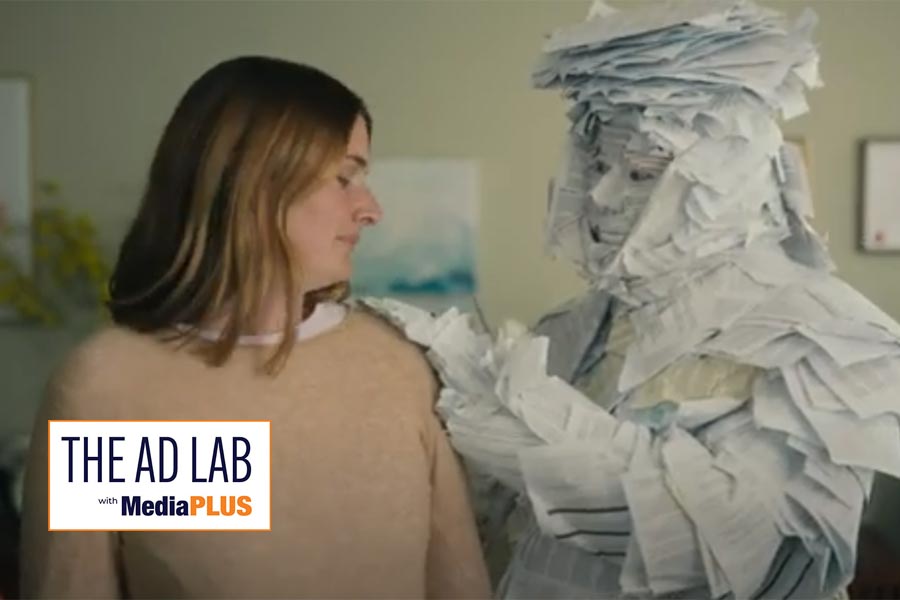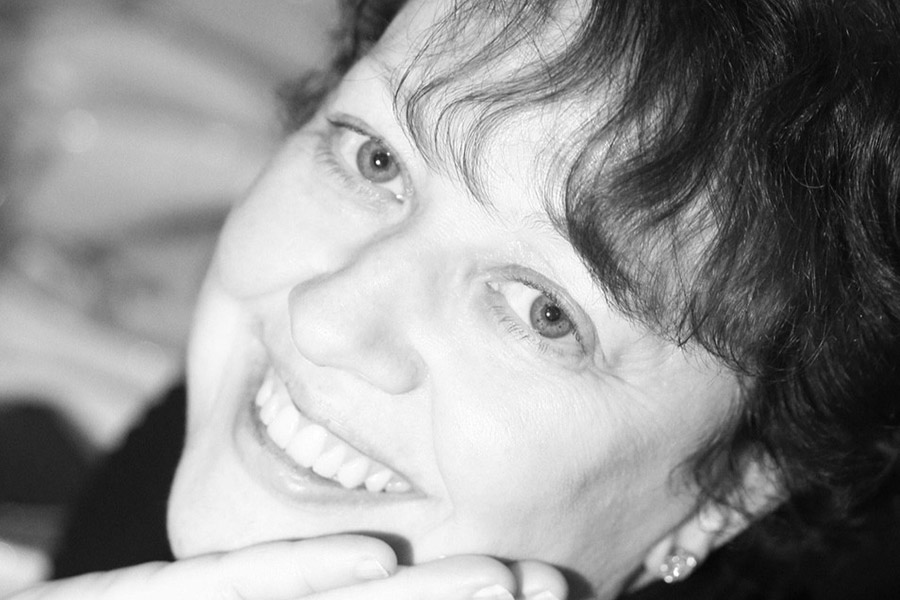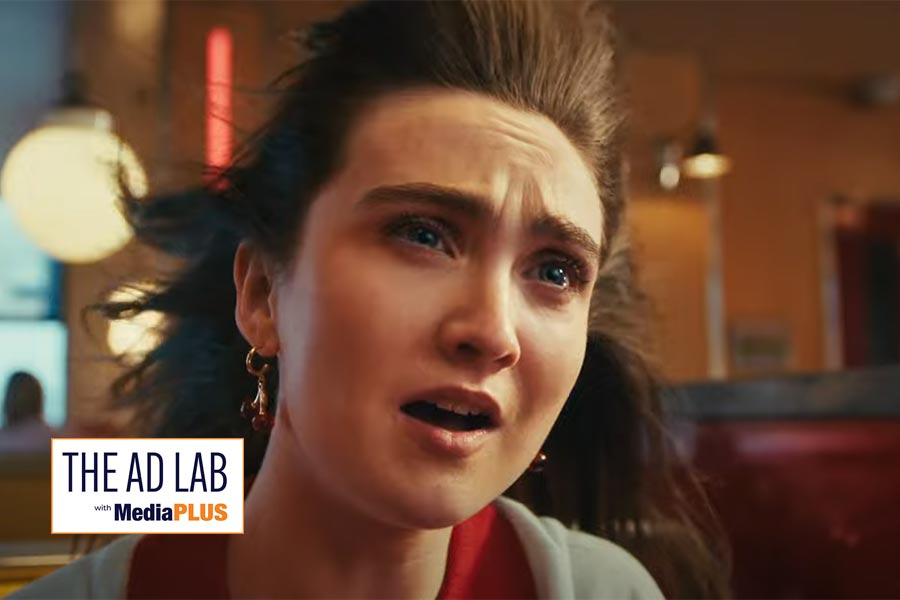Every week, Amárach and Future Proof Insights share exclusive findings from their PRIZM+ ad testing service, showcasing best practice creative advertising in Ireland.
OUTsurance’s "Insurance Therapy" campaign flips the switch on traditional insurance advertising by parodying the emotional baggage consumers often carry around their providers.
Framed as a group therapy session, the ad doesn’t push product specs or premiums, instead, it offers catharsis.
Through comedic exaggeration and sly scripting, it reframes switching insurers as an act of self-care.
Crucially, the opening shot sets the scene with just enough contextual clarity to facilitate interpretation of the humour that follows.
In just a second, the audience is primed: this is therapy, but for your insurance problems.
Even more strategically, the creative keeps viewer attention focused squarely on the consumer's pain points, the very areas where OUTsurance provide solutions.
From long call wait times to annual premium hikes, the frustrations being voiced double as category entry points and competitive differentiators.
The campaign is creative, but its category signals are unmistakable.
What makes it particularly effective is that none of this feels bolted on.
The category, the offer, the differentiators, they’re all hardwired into the structure of the ad.
You can't watch this without understanding it's for insurance. You can't watch this without absorbing what makes OUTsurance different.
And yet, it remains enjoyable, humorous, and relatable.
From a neuroscience standpoint, the ad delivers a steady emotional arc: it builds tension through the protagonist's frustration, and releases it with humour, then anchors the brand at the point of emotional relief.
Engagement remains solid throughout, while emotion and memorisation peak at key comedic and branding moments.
Cognitive Load is well-balanced, indicating that viewers stayed with the narrative without confusion or fatigue.
The result? A cleverly built journey from relatable empathy to impact.
Best Performing Scenes
- "It’s Me" (7.0–13.0s)

A moment of comic surprise breaks through the tension. As the Outsurance character’s phone rings, he panics: “If that’s for me, I’m not in.”
The woman he’s been ignoring calmly holds up her phone: “It’s me.”
The punchline lands with perfect awkward timing.
This scene triggers a classic prediction error, we expect one dynamic, and get another. That twist creates a spike in Emotion and Engagement.
From a storytelling point of view, it marks the comic climax: the audience realises the insurer isn’t just unresponsive, he’s willfully disconnected.
That emotional payoff primes viewers for the product reveal that follows.
2."Tagline Lock-Up" (15.0–20.0s)
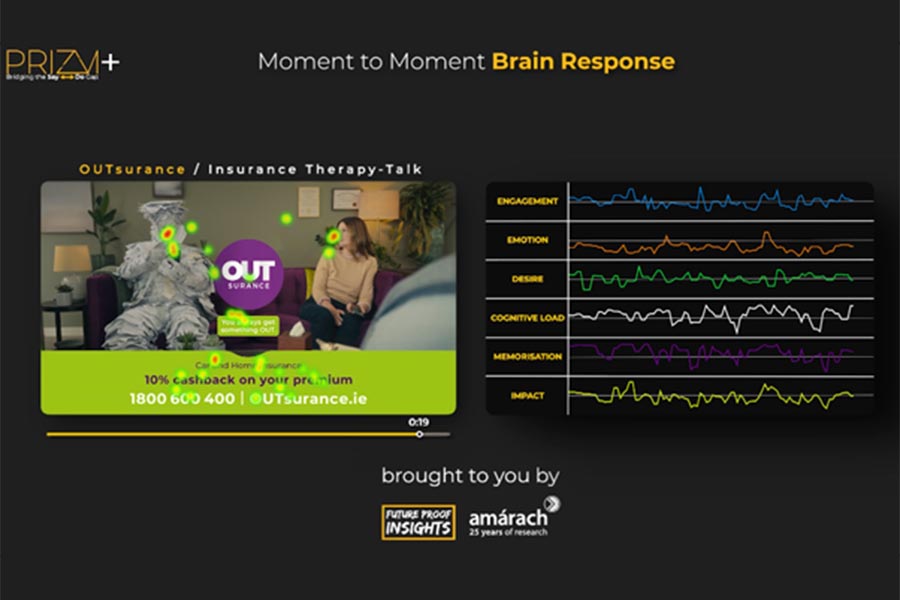
As the ad closes, the voiceover poses a tongue in question "Looking for an insurer who wants to talk to you?", which effectively frames Outsurance as the solution to the tension of not being able to get through to your insurer.
This accompanied by the brand promise, “You always get something OUT.” The visual is clean, a full-screen logo, offer details, and CTA.
The VO lands a final nudge: “Call OUTsurance for a competitive car and home quote.”
Here, memorisation and impact spike. This is due to conceptual closure. Cognitive Load drops here, a sign that the message is clear, simple, and easy to encode.
Importantly, this is when brand and benefit come together, and the brain locks it in.
Underperforming Scenes
"Gaming On" (4.0–7.0s)
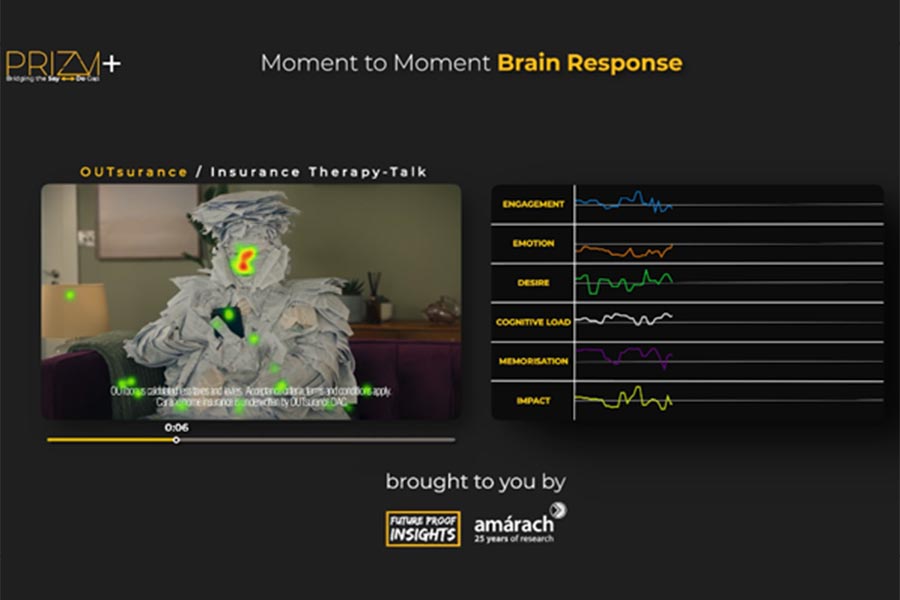
The Outsurance character continues to play his game, half-listening to the woman. While the line “Hey, that’s not fair” adds a layer of tone-deaf humour, the execution lacks the visual or narrative contrast needed to register meaningfully.
The comedic intent is present, but it doesn’t land strongly enough to shift neural response. The character’s paper costume, while absurd, may also blur the scene’s intention, as his ignorance is difficult to distinguish.
Cognitive Load rises slightly, likely because viewers are juggling unclear emotional cues with emerging dialogue.
Emotion briefly lifts as viewers sense the awkwardness, but quickly fades when the moment doesn’t develop or resolve.
The humour flattens before it connects. A more deliberate beat or exaggerated visual cue could have given this scene greater impact.
Behavioural Impact (COM-B)
From a COM-B perspective, the ad performs strongest on Motivation. Viewers clearly understand what’s on offer and find the emotional framing compelling.
The idea of switching as a form of self-liberation resonates.
Capability also scores well. The ad avoids jargon, presents clear offers (e.g., 10% cashback), and anchors the website and phone number visually. Viewers know what to do next.
Opportunity sees a slight dip. While the individual therapy metaphor works, it doesn’t fully suggest a social shift.
There’s no depiction of a broader customer movement or peer approval, which limits social proof.
Demographically, the ad landed best with urban professionals under 45, likely due to the dry humour, familiar frustration with service providers, and relatable tone.
Older adults showed lower recall and emotional scores, suggesting that the therapy-style framing may not resonate as strongly with them.
Final Thought: Lessons for Marketers
OUTsurance cracked something clever here: they didn’t just write a funny ad, they reframed insurance anxiety as a recognisable, emotional burden.
And then gave it a setting we already associate with healing: therapy. That single creative decision unlocks everything that follows.
The brilliance lies in how familiar frustrations, like not being able to get through to your insurer. The tone is satirical, but the message is precise.
These aren’t just jokes. They’re engineered reminders of pain points that "your insurance provider might do" but OUTsurance resolve.
And because the humour is woven directly into the metaphors that define the category, the product never feels tacked on or forced.
This is a standout example of how to anchor brand benefit in metaphor, deliver category entry points as punchlines, and make the product feel like the emotional release.
The result is creative that entertains while strategically reinforcing OUTsurance’s difference, you laugh, but you also remember. You recognise yourself, and then you recognise the brand.
For more insights from PRIZM+ on how neuroscience drives advertising impact, visit: https://www.futureproofinsights.ie/prizm-plus/


